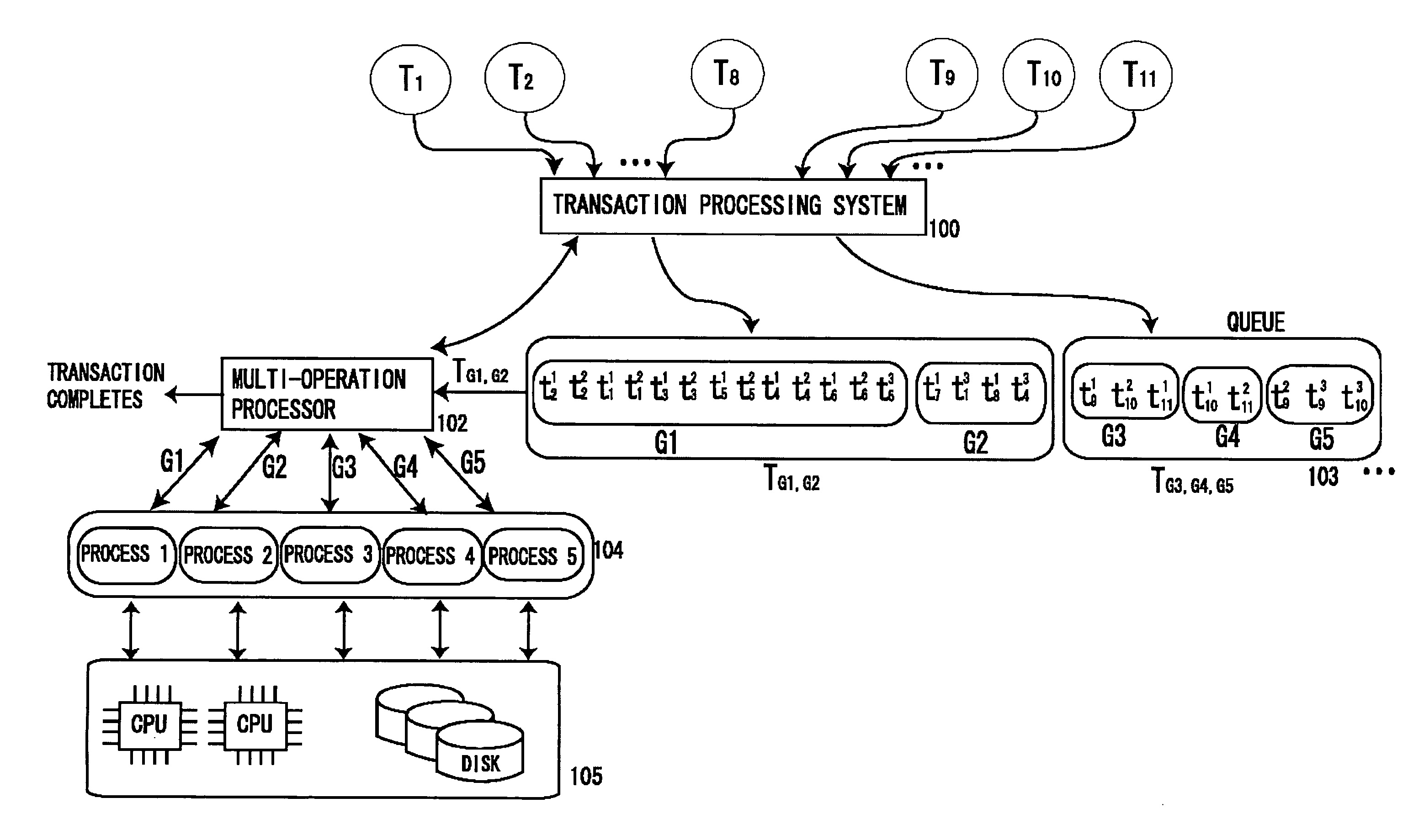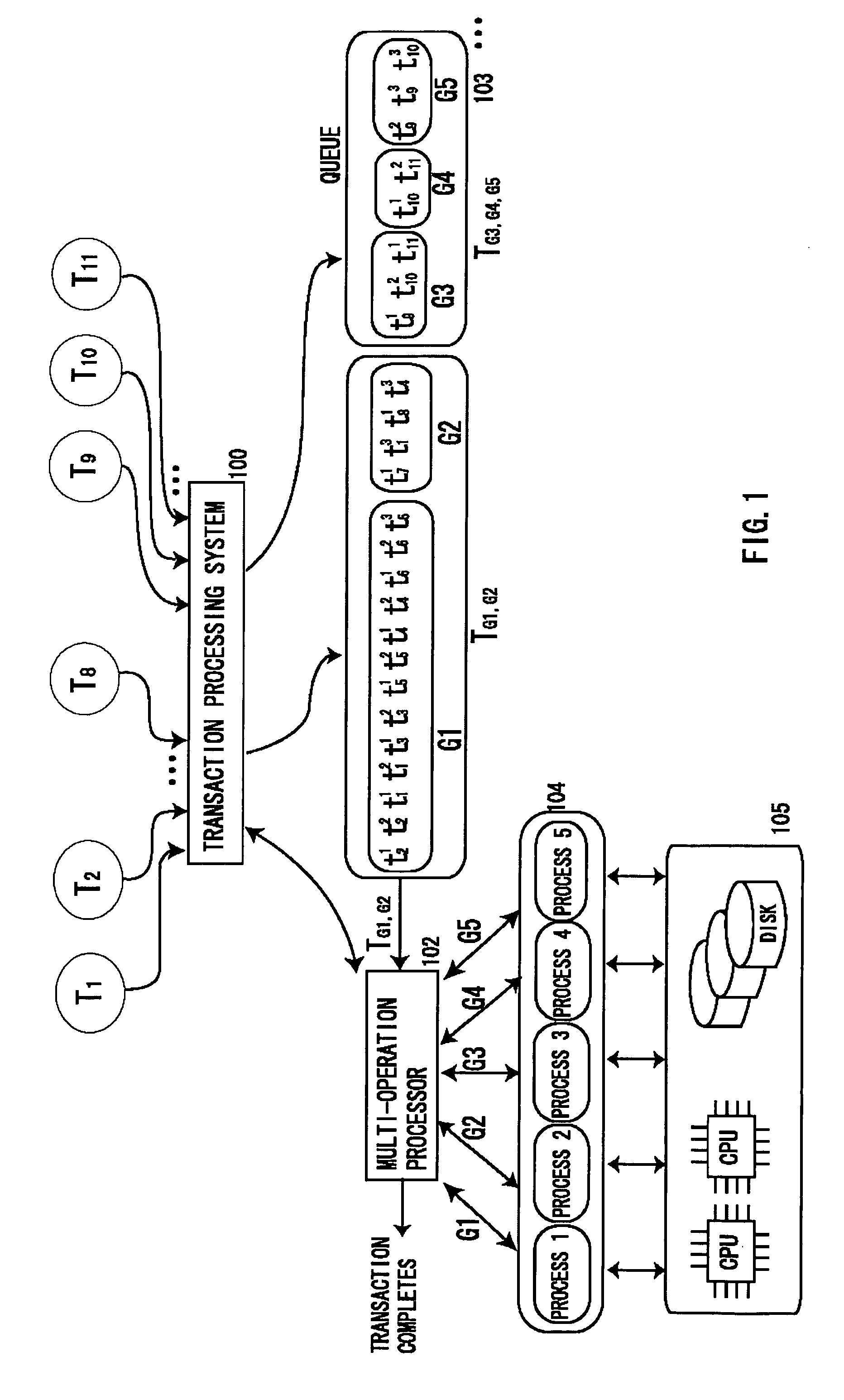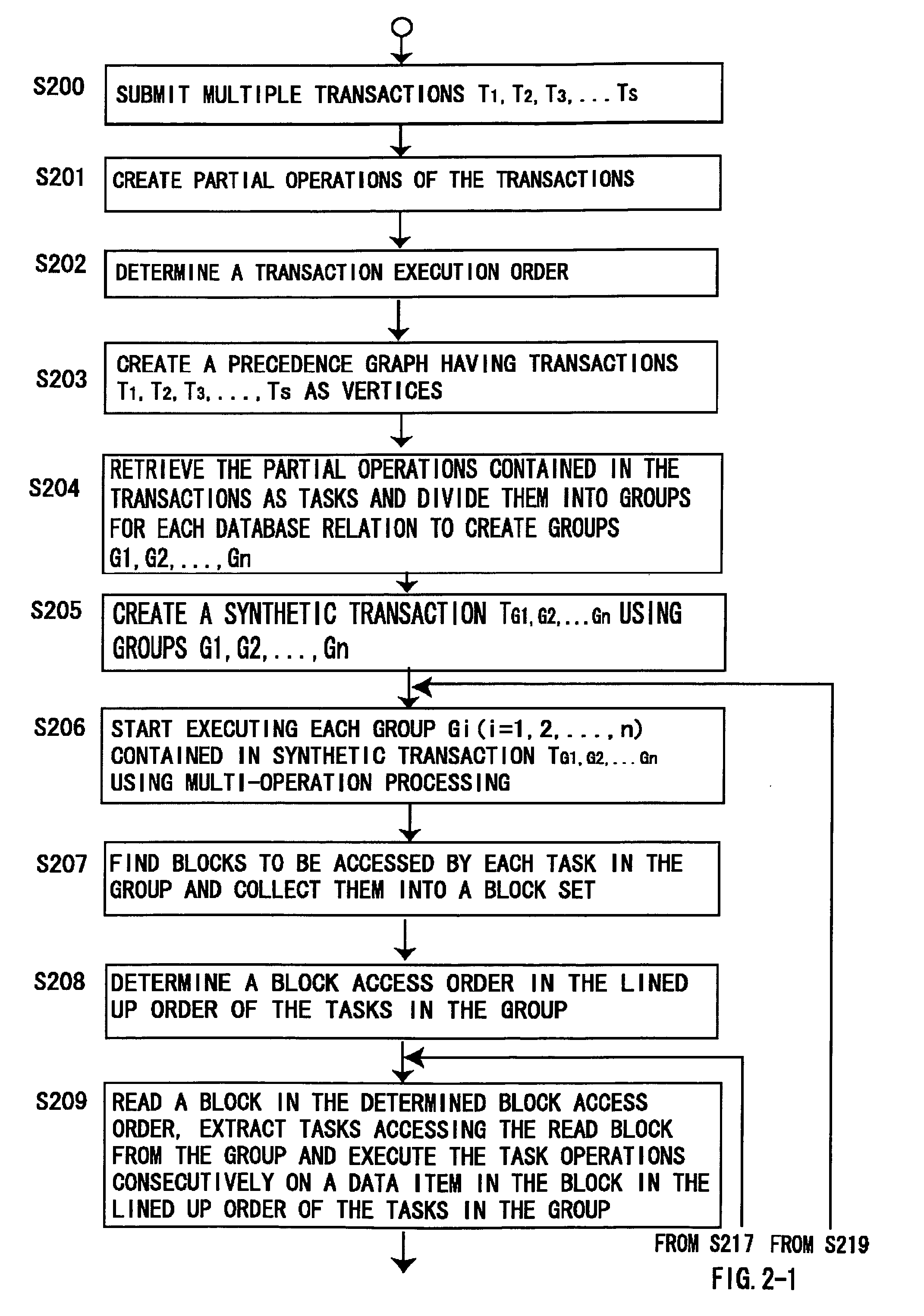Transaction processing system of database using multi-operation processing providing concurrency control of transactions
a transaction processing and database technology, applied in the field of transaction processing systems of databases, can solve problems such as wasting valuable cpu processing time, affecting the general acceptance of serial schedules, and inconvenient operation of data,
- Summary
- Abstract
- Description
- Claims
- Application Information
AI Technical Summary
Problems solved by technology
Method used
Image
Examples
case 1
Operation on Data Item X:
[0527]Synthetic transaction TG1, G2, . . . , Gn requesting a write operation write_item(X) for data item X
[0528](a) If read_TS(X)>TS(TG1, G2, . . . , Gn) or write_TS(X)>TS(TG1, G2, . . . , Gn), abort synthetic transaction TG1, G2, . . . , Gn by aborting all of the uncommitted transactions contained in TG1, G2, . . . , Gn. The aborted transactions are rolled back and resubmitted to the transaction processing system.
[0529](b) If the condition of part (a) is not satisfied, execute write_item(X) of synthetic transaction TG1, G2, . . . , Gn and set the value of write_TS(X) to TS(TG1, G2, . . . , Gn).
case 2
peration on Data Item X:
[0530]Synthetic transaction TG1, G2, . . . , Gn requesting a read operation read_item(X) for data item X
[0531](a) If write_TS(X)>TS(TG1, G2, . . . , Gn), abort synthetic transaction TG1, G2, . . . , Gn by aborting all of the uncommitted transactions contained in TG1, G2, . . . , Gn. The aborted transactions are rolled back and resubmitted to the transaction processing system.
[0532](b) If write_TS(X)G1, G2, . . . , Gn), execute read_item(X) of TG1, G2, . . . , Gn, and set the value of read_TS(X) to TS(TG1, G2, . . . , Gn) if the value of TS(TG1, G2, . . . , Gn) is larger than read_TS(X).
[0533]Next, based on these rules, concurrent execution of synthetic transactions TG1,G2 and TG3,G4,G5 is described by using multi-operation processing using timestamps.
[0534]FIG. 7 shows the concurrent execution of synthetic transactions TG1,G2 and TG3,G4,G5 by using multi-operation processing using timestamps.
[0535]For updating record D.r19, synthetic transaction TG3,G4,G5 rea...
PUM
 Login to View More
Login to View More Abstract
Description
Claims
Application Information
 Login to View More
Login to View More - R&D
- Intellectual Property
- Life Sciences
- Materials
- Tech Scout
- Unparalleled Data Quality
- Higher Quality Content
- 60% Fewer Hallucinations
Browse by: Latest US Patents, China's latest patents, Technical Efficacy Thesaurus, Application Domain, Technology Topic, Popular Technical Reports.
© 2025 PatSnap. All rights reserved.Legal|Privacy policy|Modern Slavery Act Transparency Statement|Sitemap|About US| Contact US: help@patsnap.com



